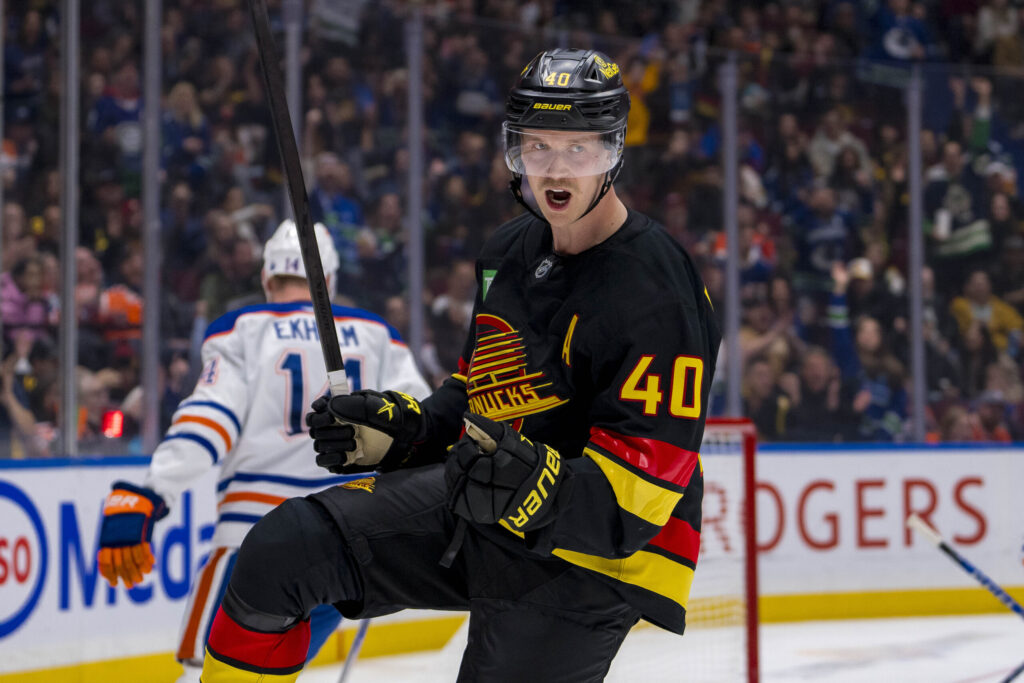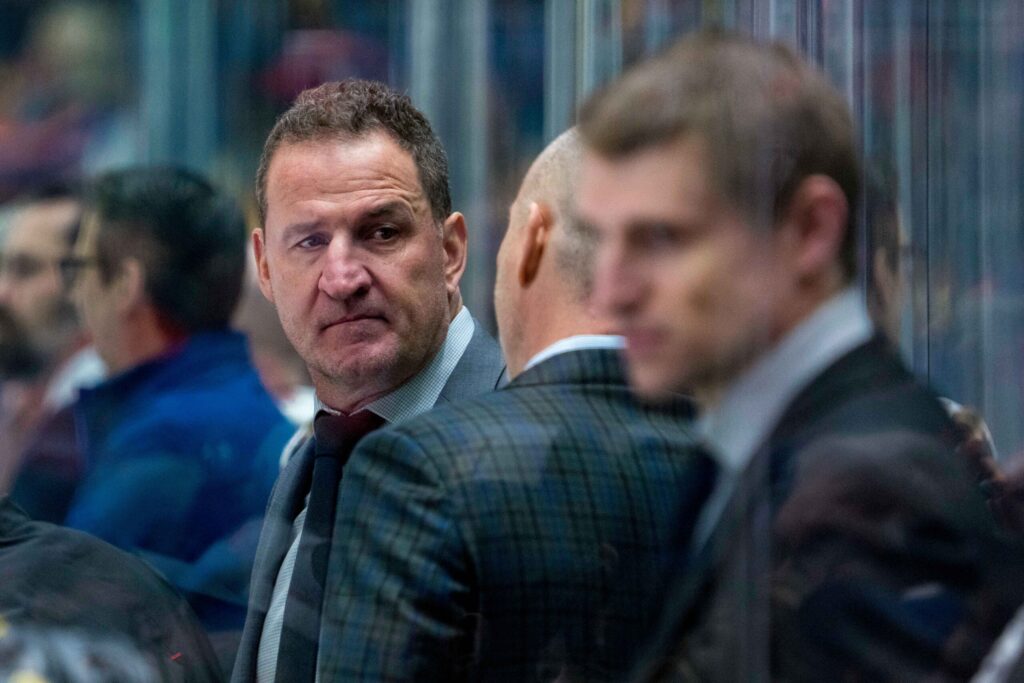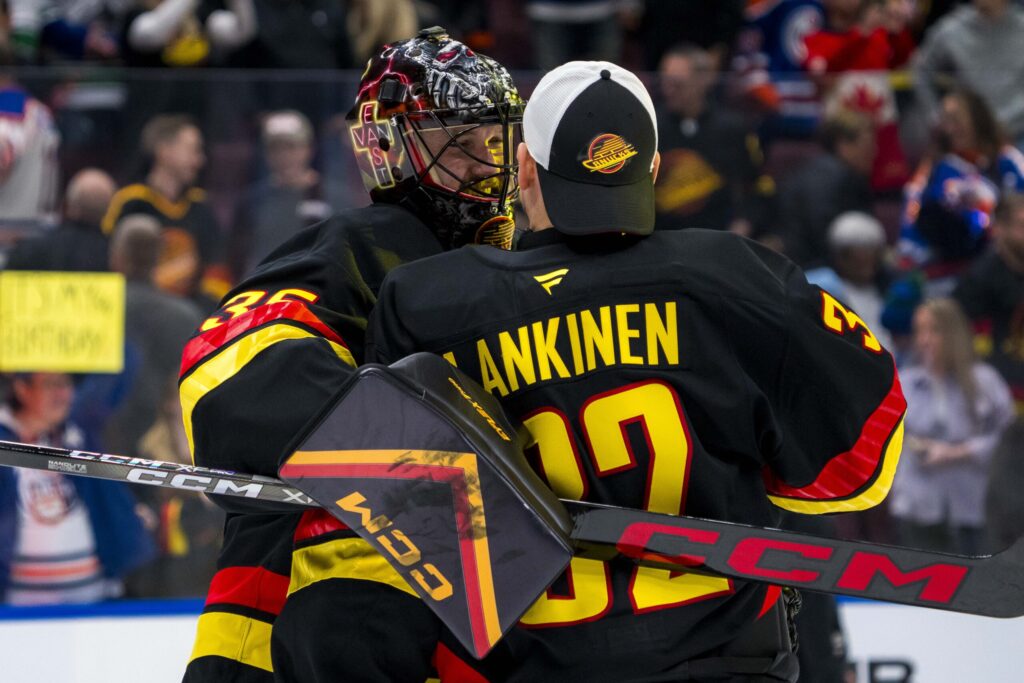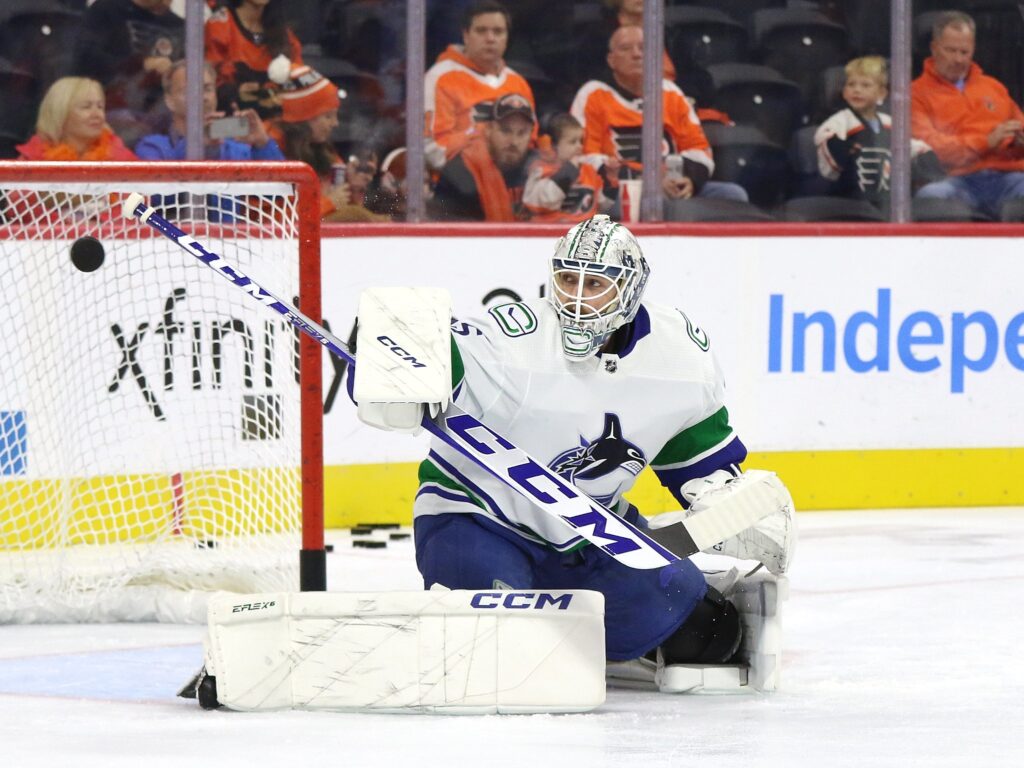Another NHL season is upon us, and on the West Coast, the air is thick with a familiar cocktail of hope and anxiety. After a frustrating 2024-25 campaign that saw the Vancouver Canucks finish a middling fifth in the Pacific Division with a 38-30-14 record, the organization is banking on a significant turnaround. The journey begins this Thursday, Oct. 9, when the Calgary Flames visit Rogers Arena for a tilt that will see the Canucks don their iconic Black Skate jerseys. But this season is about more than just aesthetics; it’s a high-wire act, a massive bet on the team’s core pillars to not just stand tall, but to dominate.
Also on the EDGE – The Unkindest Cut: Inside the Vancouver Canucks’ Final Roster Decisions
The 2025-26 season for the Canucks boils down to two colossal, high-risk variables. If they break the right way, this team could be a legitimate threat. If they don’t, it’s another long winter in British Columbia.
The Two Pillars of ‘What If’
Make no mistake, the Canucks’ fortunes are inextricably tied to the performance of two men: Elias Pettersson and Thatcher Demko. The gap between this team’s floor and its ceiling is defined by their ability to answer the bell.

First, let’s talk about Elias Pettersson. The Swedish centreman is the offensive engine, and last season, that engine sputtered. A paltry 45 points (15 goals, 30 assists) in 64 games is simply not good enough for a player of his calibre and contract. The quiet confidence from management is that last year was an aberration. The expectation—no, the necessity—is for Pettersson to return to elite form. We’re talking about a 95-to-100 point, Selke-calibre performance. He needs to be the dominant, game-breaking force that drives play and makes his wingers better. Reports from the preseason are promising; he looks stronger, and the explosive one-timer that once terrorized goalies appears to be back. For the Canucks to have a prayer, Pettersson can’t just be good; he has to be spectacular.
The second, and arguably more critical, variable is the health and consistency of goaltender Thatcher Demko. When he’s on, Demko is a top-tier NHL goaltender capable of stealing games. The problem is, his 2024-25 season was derailed by injury not once, but twice. He is, without a doubt, the biggest single swing factor for this club. The front office needs him to be a true No. 1 workhorse, handling a 55-to-60 game workload. The entire defensive structure is built on the foundation of having an elite netminder behind them. If Demko can stay healthy and play to his potential, he papers over a lot of cracks. If he can’t, the season could unravel quickly.
Foote’s New Blueprint
In the wake of Rick Tocchet’s departure, General Manager Patrik Allvin turned inward, promoting assistant coach Adam Foote to the head coaching position on May 14. Foote, a decorated and notoriously tough former NHL defenceman, brings a clear, defence-first identity to the bench.
His philosophy, which he’s already dubbed “Adam Foote Hockey,” is built on three core tenets: structural soundness, flexibility, and accountability. Forget being a one-trick pony. Foote has been adamant that this team will not be pigeonholed as strictly a rush team or a dump-and-chase squad. The mantra is to “adapt against our opponents.”

The system is designed to create a robust defensive shell that protects the goaltenders. The goal is to limit high-danger chances, control the neutral zone, and frustrate opposing offences. Offence, in turn, will be generated through quick, responsible transitions and opportunistic attacks. It’s a classic, hard-nosed approach that demands buy-in from every player on the roster. Accountability will be swift for those who fail to execute the system.
Forging the Forward Lines
After a respectable 4-2-0 preseason, the opening night roster is set with 14 forwards, 7 defencemen, and 2 goalies. The biggest splash of the offseason was the acquisition of winger Evander Kane from the Edmonton Oilers. Kane brings a much-needed cocktail of grit, secondary scoring, and, perhaps most importantly, legitimate playoff experience to a locker room that needs it.
His arrival, combined with the trade of Dakota Joshua and an injury to Nils Hoglander, has reshaped the forward corps. The most likely lines for opening night against the Flames are a fascinating blend of veteran stability and high-octane youth.
- First Line: Jake DeBrusk – Elias Pettersson – Brock Boeser This trio has remained intact throughout training camp. DeBrusk provides the north-south speed and puck retrieval, Boeser brings the lethal shot, and it’s all designed to give Pettersson the space and support he needs to rediscover his magic.
- Second Line: Drew O’Connor – Filip Chytil – Conor Garland Speed, speed, and more speed. O’Connor and Chytil showed flashes of real chemistry before Chytil’s injury last season. With the relentless energy of Garland on the wing, this line is built to be a forechecking nightmare for opposing defenders.
- Third Line: Evander Kane – Braeden Cootes – Jonathan Lekkerimaki This is the X-factor line, affectionately nicknamed the “Kid Line plus their dad.” Kane provides the veteran muscle and scoring touch, but the excitement is centered on the kids. Jonathan Lekkerimäki, 20, has impressed with his wicked snipe and a vastly improved two-way game. But the real surprise has been Braeden Cootes, the 18-year-old 2025 first-round pick who forced his way onto the roster with a brilliant camp. This line gives Vancouver the kind of offensive depth from the third unit that they’ve lacked for years.
- Fourth Line: Arshdeep Bains – Aatu Raty – Kiefer Sherwood Don’t sleep on this unit. It’s being described as a “sneaky good scoring line” that can also bring the sandpaper. It’s a reliable, physical group that can chip in offensively and win puck battles in the dirty areas.
The Blue Line Bedrock and the Tandem in Net
While the questions up front are significant, the Canucks’ defensive corps is viewed as one of the team’s biggest strengths, and it all starts with the captain. Quinn Hughes, fresh off a Norris Trophy-winning season, is reportedly already in mid-season form, which is a terrifying thought for the rest of the league.
- Top Pairing: Quinn Hughes – Filip Hronek This duo has already established itself as one of the premier pairings in the entire NHL. Their chemistry is undeniable, providing a perfect blend of elite offensive dynamism from Hughes and steady, two-way play from Hronek.
- Second Pairing: Marcus Pettersson – Tyler Myers On paper, this looks like a surprisingly effective shutdown duo. Pettersson’s defensive acumen combined with Myers’ massive reach could be a formidable obstacle for opposing top-six forwards.
- Third Pairing: Derek Forbort – Elias Pettersson This is a classic veteran-rookie pairing. Forbort provides the steady, stay-at-home presence, while Pettersson, a rookie, earned his spot by showcasing a solid two-way game during the preseason. With prospects like Tom Willander and Victor Mancini marinating in the AHL, the depth on the back end is solid.

In goal, the plan to protect Demko involves a legitimate partnership. The organization committed to this by signing Kevin Lankinen to a five-year, $22.5 million contract. That’s not backup money; that’s 1B money. The expectation is for Lankinen to provide high-efficiency goaltending for 30-to-35 starts, allowing the team to manage Demko’s workload and ensure he is healthy and fresh for a potential playoff run.
The Cap Game and the Best-Case Scenario
Navigating the salary cap is the final piece of this complex puzzle. The Canucks are entering the season pressed right up against the ceiling, with only about $1.34 million in projected cap space. This financial reality is precisely why making room for waiver-exempt, high-ceiling rookies like Cootes and Lekkerimäki was not just a luxury, but a strategic necessity.
However, the real story is the team’s projected deadline cap space, which is a healthy $6.1 million. This gives Patrik Allvin a massive strategic advantage. If this team is in the playoff hunt come March, he has the ammunition to be an aggressive buyer, potentially adding a top-four defenceman or a physical scoring winger for the stretch run.
So, what’s the dream scenario? It looks something like this:
- Elias Pettersson Rediscovers His Spark: He returns to form as a 100-point, defensively responsible centre, silencing all doubters.
- Quinn Hughes Jumps From Great to Legend: He builds on his Norris campaign and enters the Hart Trophy conversation as the league’s most dominant defenceman.
- The Canucks’ Kids Push Through Early: Lekkerimäki and Cootes become impactful, cost-controlled depth players, solving the team’s historical shallowness down the middle.
If these franchise pillars—Pettersson, Demko, and Hughes—all catch fire simultaneously, the math becomes very interesting. The target for a playoff spot in the brutally tough Pacific Division will likely be north of 103 points. It’s a tall order, but the pieces are there. This isn’t just about squeaking into a Wild Card spot. If everything breaks right, this is a team built to not just make the playoffs, but to win a round or two. The gamble is on the table; now we watch to see if it pays off.
Created with the aid of Gemini AI
